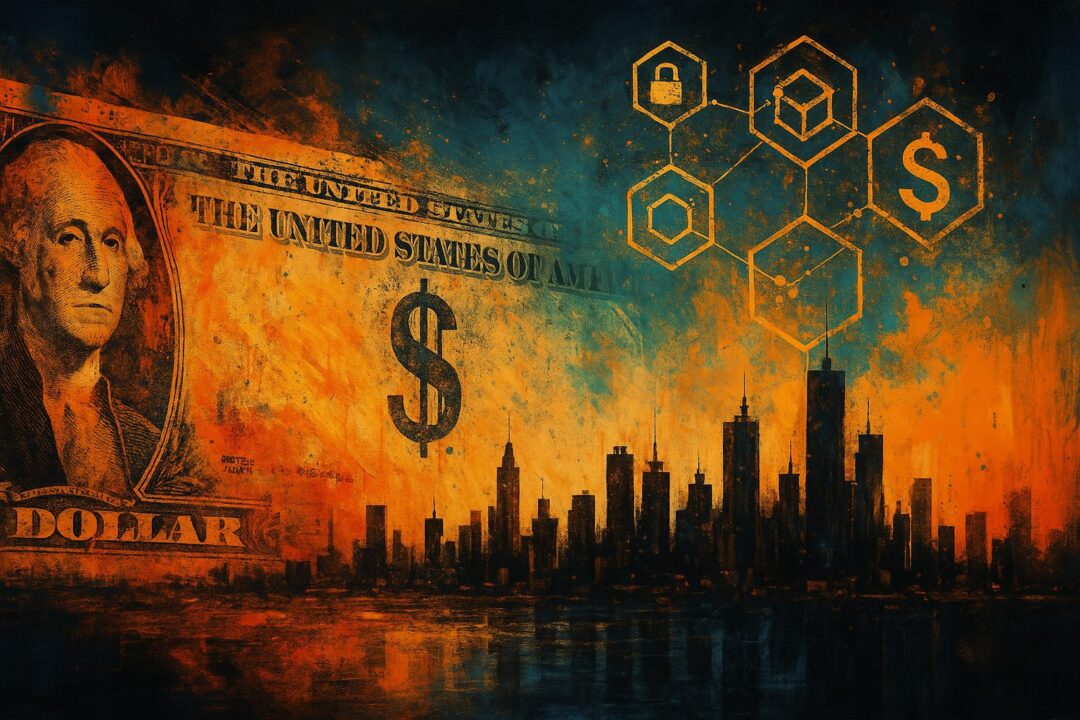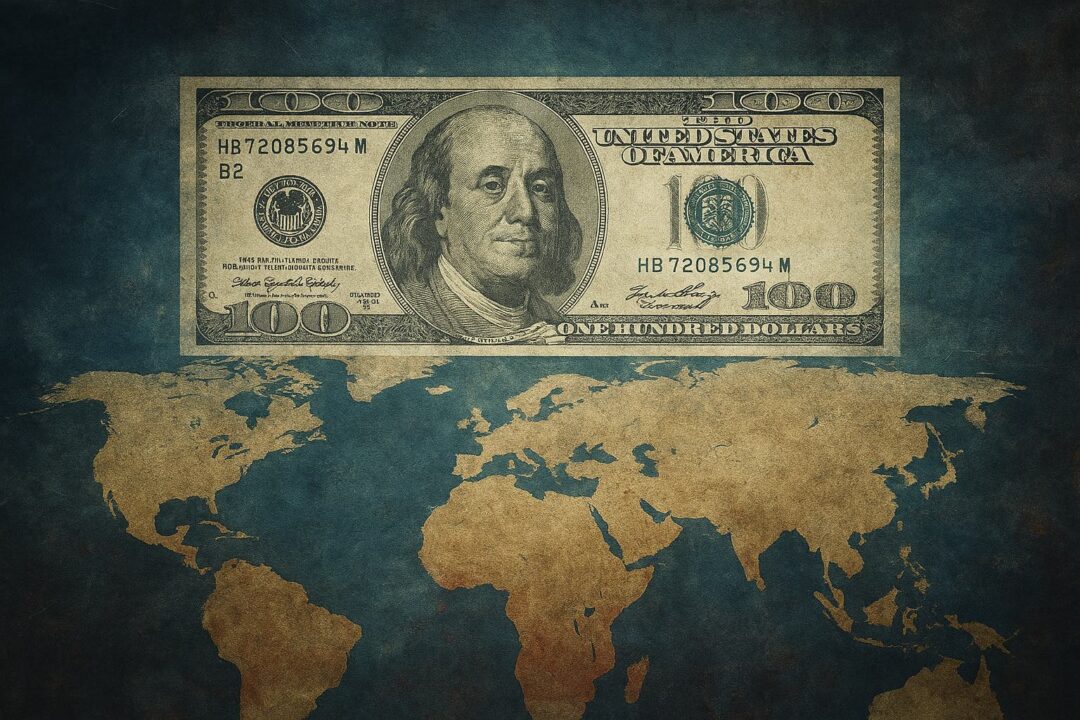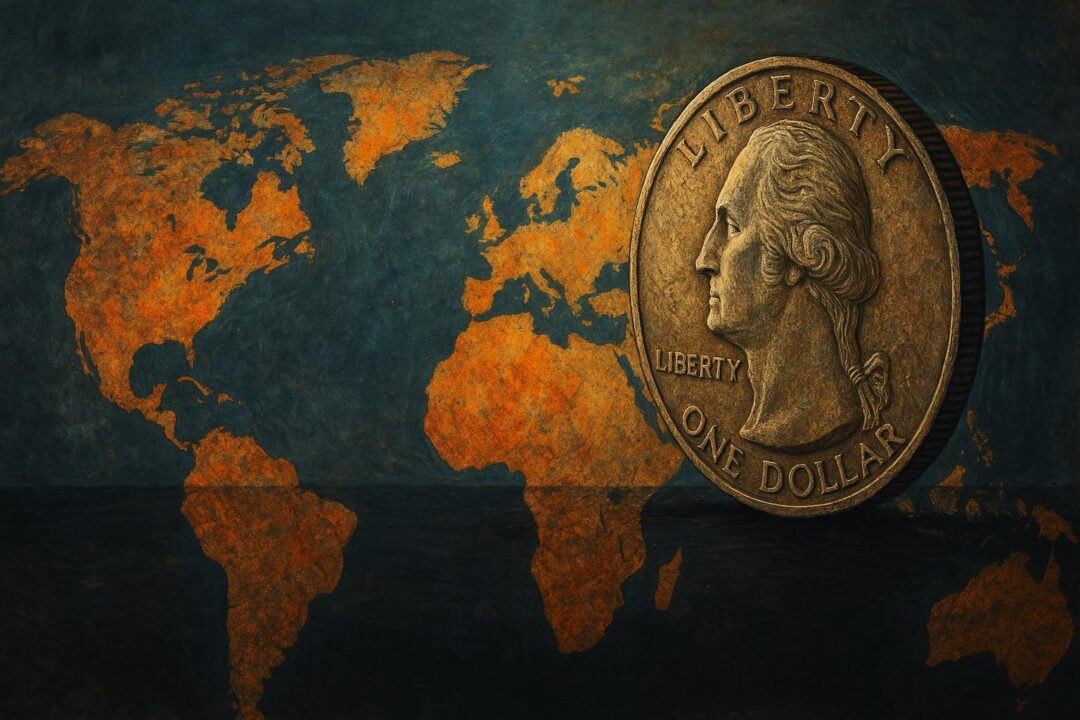The most powerful weapon the United States ever built doesn’t fly, explode, or spy. It’s the U.S. dollar — a global IOU backed by debt, geopolitics, and the fading aura of trust. For nearly a century, it has granted the U.S. what no empire before it ever achieved: the ability to rule the world without occupying it.
This is dollar hegemony — the crown jewel of American power. It allows Washington to run deficits without consequence, to fund wars without taxes, and to import real goods in exchange for paper promises. It makes Wall Street the center of gravity for global capital. It gives the U.S. government a kind of financial kill switch over adversaries and allies alike.
But the world is shifting. And what once looked like a throne is starting to look like a trap.
Because in an age of automation, AI, and deglobalization, the logic of dollar dominance is breaking down — and the same system that made America rich is now making it dangerously fragile.
When Your Greatest Strength Becomes Your Weakness
Reserve currency status isn’t free. It demands that the U.S. run massive trade deficits to keep the global economy supplied with dollars. That means exporting dollars and importing goods — deindustrializing by design.
For decades, this seemed sustainable. But over time it built a warped economy:
- A consumption machine fed by debt
- A financial sector bloated on leverage
- A tech sector disconnected from tangible production
- And a working class left behind by both capital and code
And now we’re facing a new reality: in a world where robots and algorithms can replace human labor, the logic of offshoring collapses. When labor costs approach zero, the cheapest factory is the one closest to home.
In that world, industrial capacity becomes strategic power. But America traded that away for cheaper TVs and higher stock prices. China didn’t.
China: Not Copying the U.S., But Rewriting the Model
It’s tempting to think of China as America’s inverse — all factories and no finance. But that’s a mirage.
Yes, China wants hard power: factories, ports, chips, energy. But it also wants what the U.S. has: the ability to export its debt, control global payment rails, and tie other countries into a financial system it dominates.
It’s already experimenting with digital currency infrastructure, cross-border yuan settlement, and even discussions around a BRICS-backed commodity currency. It’s stockpiling gold, building central bank relationships, and slowly shifting global trade away from the dollar.
But unlike the U.S., China doesn’t want to fund an empire of consumption. It wants to build an empire of production — then make the world pay for access.
The Russia Shock: When Trust Breaks
When the U.S. and its allies froze Russia’s central bank reserves in 2022, they set off a global chain reaction. What was once unthinkable — seizing a sovereign state’s currency reserves — became precedent. It was a demonstration of raw financial power, but also a breach of trust.
Suddenly, every country holding dollar reserves had to ask: What happens if we end up on the wrong side of U.S. foreign policy?
Many of them — quietly, but urgently — began building alternatives:
- Gold
- Yuan-based trade
- Bilateral swaps outside of SWIFT
- And yes, even crypto and stablecoin experiments
The message was clear: the dollar may be powerful, but it’s no longer neutral. And power without trust is fragile.
Digital Dollars, Digital Debt — or a Digital Empire?
As cracks form in the global dollar system, the U.S. is making its next move: stablecoins.
These are digital tokens — issued privately or publicly — pegged to the U.S. dollar and backed, in most cases, by short-term U.S. Treasuries. They’re fast, frictionless, and globally accessible through nothing more than a smartphone. For billions of people in unstable monetary environments, they offer a kind of dollarization without banks — a savings account outside of their own governments’ control.
Here’s the kicker: stablecoins are becoming one of the most effective vehicles for exporting U.S. debt. Every time someone holds a dollar-backed stablecoin, they are — knowingly or not — helping fund the U.S. government.
If the U.S. plays this right, stablecoins could do what military bases and trade deals can’t: embed American financial infrastructure into the daily lives of people across the world, even in places hostile to U.S. foreign policy.
This could become a new kind of soft empire — not through occupation or foreign aid, but through code and collateralized debt.
But it’s not a guaranteed win.
Stablecoins still rely on the perceived safety of U.S. Treasuries, and they introduce new forms of risk: regulatory overreach, centralization chokepoints, and vulnerability to capital flight. If trust in U.S. fiscal policy breaks down — or if the technology is seen as a vector for surveillance or coercion — the very tools meant to expand dollar power could accelerate its decline.
It’s a tightrope act: played well, stablecoins could entrench American dominance deeper than ever. Played poorly, they could expose just how fragile that dominance has become.
The Fork in the Road
So here we are.
On one path: a future where the U.S. exports digitized debt across a global network of dollar-based rails — backed by Treasuries, enforced by code, and accepted by billions. If done strategically, this could reinvigorate dollar hegemony for the digital age — allowing the U.S. to dominate not just global finance, but the infrastructure beneath it.
On the other path: a slow erosion of trust, a shift toward hard assets, decentralized finance, regional currencies, and a global economy that no longer wants to hold American paper — digital or otherwise.
Which path the U.S. ends up on depends not just on innovation, but on discipline:
- Fiscal discipline at home
- Diplomatic restraint abroad
- And the ability to build trust, not just control
Because in a world where labor costs trend toward zero and code eats everything, the ultimate reserve currency may not be the one with the biggest military or the deepest bond market — but the one with the most resilient system and the fewest enemies.
The dollar gave America empire without colonies. Stablecoins might give it empire without borders. But only if it earns the world’s trust — again.
Discover more from Brin Wilson...
Subscribe to get the latest posts sent to your email.



